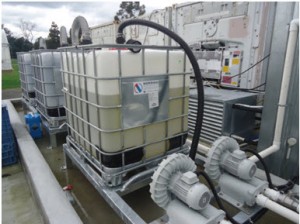Australian Customs and Border Protection Service: Protecting Borders along with Health, Safety and Environment
The Australian Customs and Border Protection Service has implemented Nordiko’s best practice container ventilation technology, used when imported shipping containers are inspected on import to Australia. This involves monitoring for dangerous residual gases in containers prior to opening, and if necessary, ventilating these gases through Nordiko activated carbon filters. This protects the health of staff entering containers, as well as the environ- ment.
A range of gases can arise inside shipping containers – fumigants such as methyl bromide or phosphine used to meet biosecurity requirements, as well as 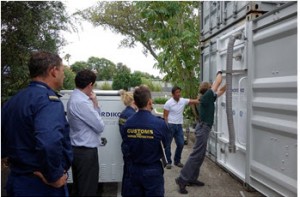 toxic industrial chemicals. Toxic chemicals can occur due to desorption from commodities in transit, and could otherwise expose those who enter shipping containers to signifi- cant health risks. These gases include formaldehyde, toluene and benzene, amongst others.
toxic industrial chemicals. Toxic chemicals can occur due to desorption from commodities in transit, and could otherwise expose those who enter shipping containers to signifi- cant health risks. These gases include formaldehyde, toluene and benzene, amongst others.
In many cases there is no smell or other warning of the presence of these gases at unsafe levels. Australian Customs and Border Protection Service has set an important benchmark for responsible management of the safety and environmental risk posed by residual gases. Across many industries, this risk affects thousands of workers in Australia, and hundreds of thousands around the world, whose job involves entry to shipping containers.
Thailand’s Largest Port Introduces Methyl Bromide Recapture
Laem Chabang is one of the Top 20 largest container ports in the world, and has made Methyl Bromide fumigant recapture a requirement for fumigation at 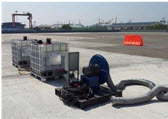 the port. Cranes and Equipment Co,Ltd ( CEA) is coordinating the logistics for important components for Western Australia’s largest LNG project, coming from Thailand.
the port. Cranes and Equipment Co,Ltd ( CEA) is coordinating the logistics for important components for Western Australia’s largest LNG project, coming from Thailand.
Nordiko is proud to have been the supplier CEA selected to meet this standard, and commissioned a new IBC fumigant recapture system in March 2013. After performing its biosecurity function, this pesticide is recaptured on activated carbon filters, preventing the emission of this Ozone Depleting Substance to atmosphere.
The LNG Project meets the most stringent quarantine standards, in order to protect the unique ecology of Barrow Island. In this case, Methyl Bromide fumigation was an Australian Government requirement for project cargo being shipped from Laem Chabang to Western Australia.
Once again the Project has set new environmental and safety standards in its operations, helping to protect the Ozone Layer by preventing emissions of this toxic Ozone Depleter.
Under The Radar: Toxic Gas Emissions from Grain Silos and Bunkers
Many country towns in Australia and other countries with a strong agricultural industry, will have grain receival, storage and handling facilities nearby. 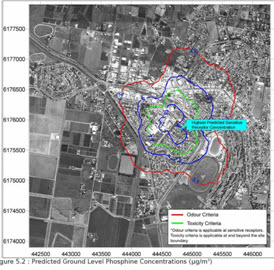 These facilities are also of- ten located at ports, for export purposes. In many cases, fumigations are performed at these premises, to control pests that might otherwise infest the commodity, or chemical treatments occur to meet export requirements.
These facilities are also of- ten located at ports, for export purposes. In many cases, fumigations are performed at these premises, to control pests that might otherwise infest the commodity, or chemical treatments occur to meet export requirements.
The growth of urban and rural populations has meant that residences, workplaces and sometimes even schools, are located in proximity to facilities where toxic gases are used, and then ventilated to atmosphere. Depend- ing upon weather conditions and other factors, these gases can spread over significant distances, posing an undetected health risk to persons typically not aware of their exposure
For any new developments in grain silos and related infrastructure, Environmental Protection Authorities usually require plume modelling or other analysis to show that release of fumigants will not exceed strict environmental limits, endangering innocent people. The fu- migants of choice, are usually Methyl Bro- mide (a Neurotoxin) or Phosphine ( a Pulmo- nary and Cardiovascular Toxin).
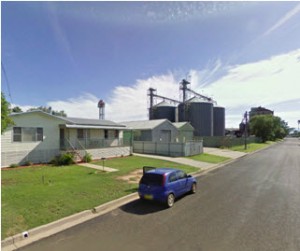 However – existing facilities, which may have been in place and operating for many years – do not come under the same degree of scrutiny. They nevertheless pose as much of a risk with their gas emissions – if not more so because questions are not asked about their environmental controls.
However – existing facilities, which may have been in place and operating for many years – do not come under the same degree of scrutiny. They nevertheless pose as much of a risk with their gas emissions – if not more so because questions are not asked about their environmental controls.
Nordiko can now offer a plume modelling program as part of its services to industry and the community. This can confirm whether or not environmental limits are being met, or if gas scrubbing technology can make opera- tions safe for all stakeholders in the commu- nity.
USA/Canada Border Conference
Nordiko is one of the sponsors of the US/ Canada Border Conference being held in Detroit, MI, on Sep 12-13, 2013. The new ULC (Ultra Lite Console) will be at 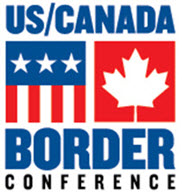 the centre of Nordiko’s presentation. The new- est product in the Nordiko range, the Ultra Light Console (ULC) provides efficient ventilation of containers with more con- venience and at a reduced cost. The Nordiko ULC can reduce ventilation times, which would normally take days by natural ventilation, to only a few hours. The ULC only weighs approximately 18 lbs and can be attached to the door of low cube (8’6”) and high cube (9’6”) shipping containers. On February 4, 2011, President Obama and Prime Minister Harper announced the United States-Canada joint declaration, Beyond the Border: A Shared Vision for Perimeter Security and Economic Competitiveness. Beyond the Border articulates a shared approach to secu- rity in which both countries work together to address threats within, at, and away from our borders, while expediting lawful trade and travel. The US/Canada Border Conference will bring together local, state, provincial and federal agencies, as well as business organizations, in a central loca- tion convenient to both nations, to ad- vance this
the centre of Nordiko’s presentation. The new- est product in the Nordiko range, the Ultra Light Console (ULC) provides efficient ventilation of containers with more con- venience and at a reduced cost. The Nordiko ULC can reduce ventilation times, which would normally take days by natural ventilation, to only a few hours. The ULC only weighs approximately 18 lbs and can be attached to the door of low cube (8’6”) and high cube (9’6”) shipping containers. On February 4, 2011, President Obama and Prime Minister Harper announced the United States-Canada joint declaration, Beyond the Border: A Shared Vision for Perimeter Security and Economic Competitiveness. Beyond the Border articulates a shared approach to secu- rity in which both countries work together to address threats within, at, and away from our borders, while expediting lawful trade and travel. The US/Canada Border Conference will bring together local, state, provincial and federal agencies, as well as business organizations, in a central loca- tion convenient to both nations, to ad- vance this
significant agenda be- tween the United States and Canada.
Health Effects of Toxic Gases
Toxic gases are often present inside shipping containers and other enclosures, arising from fumigation or desorption of chemicals from commodities. There is a common myth, that if you can’t smell anything, no gas is present. Many gases have no odour properties until extremely high concentrations are present.
International studies have consistently shown the incidence of unsafe levels of toxic gases in import containers to be in the range of 10% to 30%:
– Australia: 18%
– New Zealand: 17%
– Europe: 22%
– USA: 25%
Health effects from exposure to these gases, can be classified as “Acute” or “Chronic”. Acute exposure can be immediately apparent, or sometimes with a
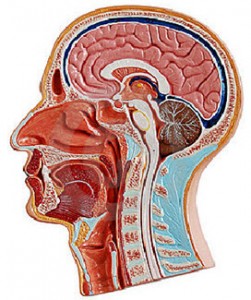 time delay of hours or days – making it difficult to correlate the cause and effect. Chronic exposure occurs, when a low dose – often undetectable – affects a person during repeated events. These events can be work related eg repeated unloading of cargo from shipping containers, or environmental eg living or working near to grain silos or other locations where fumigations occur.
time delay of hours or days – making it difficult to correlate the cause and effect. Chronic exposure occurs, when a low dose – often undetectable – affects a person during repeated events. These events can be work related eg repeated unloading of cargo from shipping containers, or environmental eg living or working near to grain silos or other locations where fumigations occur.
The long term effects of exposure are unpredictable, as they depend upon many factors, but can include obvious risks related to the type of gas:
– Formaldehyde—Carcinogen
– Methyl Bromide—Neurotoxin
– Phosphine—Cardiovascular and Pulmonary Toxin
Research is being undertaken on the potential linkage between exposure to some of these gases, and development of chronic diseases in the future. Professor Ian Shaw of Canterbury University is exploring the relationship between exposure to Methyl Bromide (a common quar- antine fumigant) and the development of Motor Neurone Disease in later life.
As with so many aspects of modern life, the full risks of exposure will only become clear some time in the future. In the meantime, there is a strong case for minimising the risk of any expo- sures in the first place.
Contact Nordiko for reference details
Plant & Food Research (PFR) Limited is a New Zealand-based science company providing research and development that adds value to fruit, vegetable, crop and food products. With over 900 people based at sites across New Zealand, as well as in the USA and Australia, at the heart of PFR is a goal to underpin the growth of plant and marine-based industry through the successful application and commercialisation of research-based innovation. A new Nordiko fumigant scrubbing and filtration system was recently commissioned at the Palmerston North facility, for work with a new fumigant, ethanedinitrile (EDN). The installation was funded by the Stake- holders in Methyl Bromide Reduction Inc., BOC and PFR.
New Fumigant Registered in Australia— Ethanedinitrile (EDN)
Ongoing efforts to implement replacements for Methyl Bromide as a fumigant are paying off. BOC in Aus- tralia have obtained registration for EDN 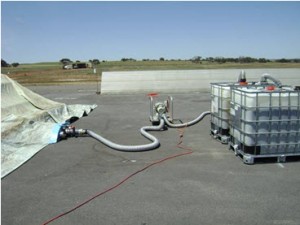 (marketed in Australia as Sterigas-1000) from the national pesti- cide regulatory authority APVMA for use in timber applications. EDN has many advantages, including the fact that it is not an Ozone Depleting Substance.
(marketed in Australia as Sterigas-1000) from the national pesti- cide regulatory authority APVMA for use in timber applications. EDN has many advantages, including the fact that it is not an Ozone Depleting Substance.
It is important to note, that one of the conditions of use for EDN is for residual fumigant to be put through a scrubbing system for destruction at the end of fumigation, rather than releasing it to the environment. Nordiko is proud to be cooperating with BOC in the provision of scrubbing technology for this gas.
In the medium term, the merits of scrubbing all fu- migants, is coming under closer attention from regulatory authorities in many parts of the world, contributing to better safety and environmental out- comes for all.
Safe Management of Import Sea Container Unpacking
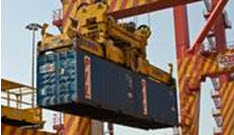 Nordiko has products and services which enable the safe opening and unpacking of import containers. Gas monitoring and ventilation are important safety procedures which should be performed, before imported containers are entered.
Nordiko has products and services which enable the safe opening and unpacking of import containers. Gas monitoring and ventilation are important safety procedures which should be performed, before imported containers are entered.
Safe Work Australia has completed a study into this risk area, and confirmed that proper risk management procedures should be under- taken. A copy of the report is available at: http://www.safeworkaustralia.gov.au/sites/swa/about/publications/pages/hazard-surveillance- residual-chemicals-in-shipping-containers
Meet the Team: Joe Falco
General Manager – Technical
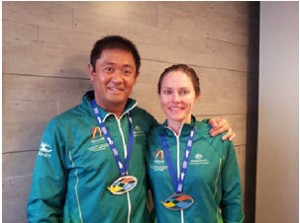 Joe and his wife (Mary) represented Australia at the recent World Triathlon Championships held in France in their various age group divisions. The event was supposed to comprise of a 4km swim, 120km bike ride and finally a 30km run to the finish, until unexpected cold weather changed the program to a duathlon (9km run, 90km ride and 21km run). Nevertheless the athletes were very proud to be given the opportunity to represent their country, and were very happy to complete the challenging mountain course. Mary did extremely well, by coming 4th woman in her division in 5hrs 40mins, just missing out on a bronze medal.
Joe and his wife (Mary) represented Australia at the recent World Triathlon Championships held in France in their various age group divisions. The event was supposed to comprise of a 4km swim, 120km bike ride and finally a 30km run to the finish, until unexpected cold weather changed the program to a duathlon (9km run, 90km ride and 21km run). Nevertheless the athletes were very proud to be given the opportunity to represent their country, and were very happy to complete the challenging mountain course. Mary did extremely well, by coming 4th woman in her division in 5hrs 40mins, just missing out on a bronze medal.
Download August Newsletter as PDF Click Here
